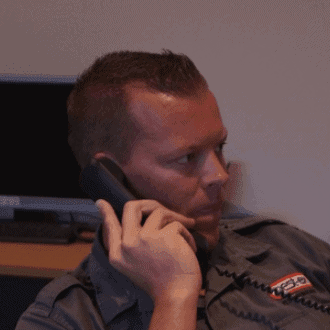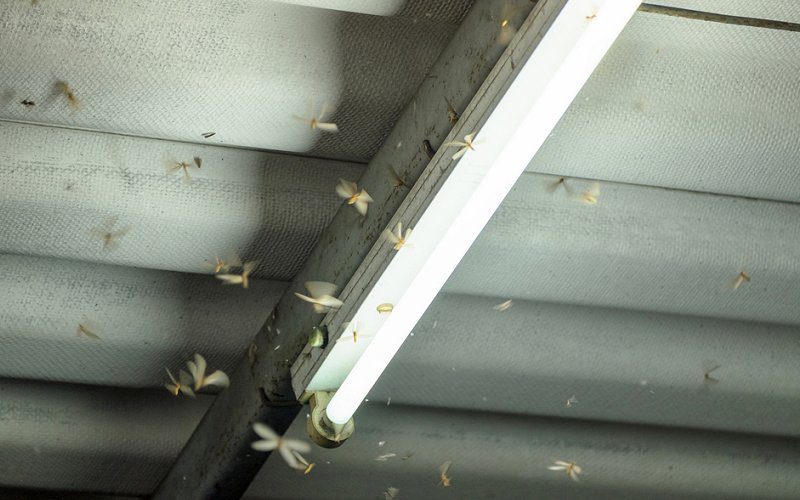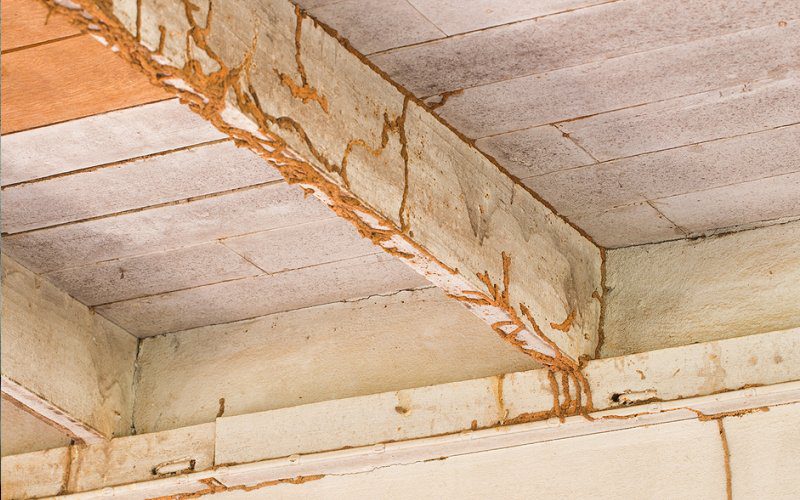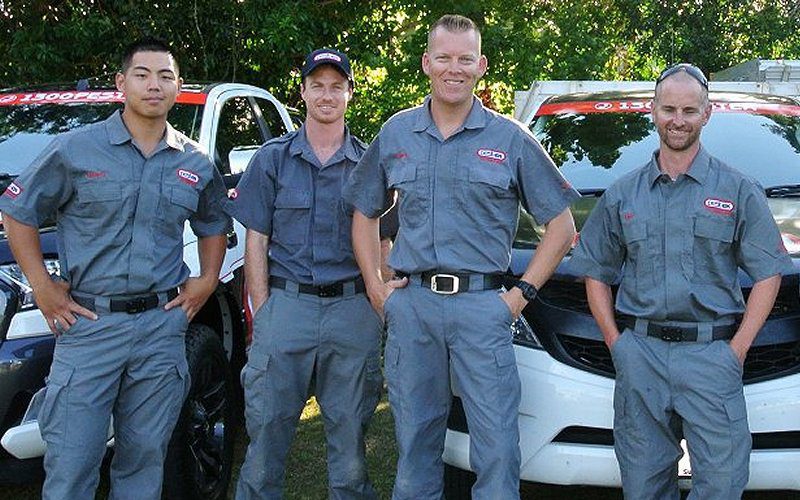
Got a Pest Problem? Call Us Today →
While it is true that termites can be hard to spot or locate in a property, thanks to their habit of entering buildings from under the ground, there are certain signs that all home owners can look for that may indicate there is a termite colony nearby. Termites love the warm, moist climate in Queensland, and are attracted to the very material our homes are mostly made up from – timber and wooden structures.
All pests can be a nuisance, but termites should strike fear into any property owner because of their ability to infiltrate a building and quickly eat away at these structures, generally unnoticed and making their nests in hard to access areas. They can cause immeasurable damage in just a short space of time in the right conditions, costing thousands of dollars in repair bills.
In some cases, if the damage is bad enough, the entire structure may need to be removed entirely. Having a professional pest inspection conducted on an annual basis can be a fantastic way to ensure your property isn’t plagued by these cunning and destructive pests. However you can also be vigilant and keep an eye out for any signs of termite activity in and around your home. Let’s look at five of the most common signs you may have a termite issue on your property.
The most obvious signs of termites in the house are often related to damage caused by their feeding activities. The most common signs include bubbling wallpaper or softened timber frames such as window sills, door frames, or skirting boards. Termites eat through wood, leaving the exterior intact but hollowing out the interior. This can make timber structures feel spongy or weak when pressed.
You may also notice mud trails running along the inside of your walls, especially in places like the corners of rooms or along the baseboards. These trails are left behind by termites as they travel between their nests and food sources.
When inspecting for termites, it’s just as important to look for signs of activity around the outside of your house as it is indoors. Termites typically enter the home through external walls or from underground, so spotting them early can help prevent more extensive damage.
Look for mud trails or termite mud tubes along the foundation of the house, or on the trees surrounding your property. Termites create these trails to protect themselves as they move between their nests and food sources. Additionally, if you notice piles of discarded wings near windows or doors, this can be a sign of termite swarmers looking to establish a new colony.
You may also notice small holes in trees or wooden structures outside your house. If left untreated, termites will often target outdoor wooden structures such as decks, fencing, and sheds.
If you have a garden or landscaped areas around your home, termites may be present, especially if your yard has wooden structures like fences, decks, or garden beds. Signs of termites in your garden include finding termite mud tubes around trees, wooden fences, and garden beds.
Termites often target dead or decaying trees, so you may notice termite trails leading to these areas. Additionally, a sudden increase in termite activity around mulch or timber in your garden can be a clue that termites have made their way into the soil and are active in your outdoor spaces.
Your yard can reveal several telltale signs of termite activity. Termites commonly target outdoor structures such as wooden fences, decks, and tree stumps. Look for termite mud tubes leading from the soil to these structures. These mud trails serve as protection for termites as they move between their nests and food sources.
You may also notice signs of wood damage on trees, fences, or garden beds, such as holes or visible wood shavings. Swarming termites are another indication that a colony is nearby, and they are often seen flying around your yard in warm weather. If you see piles of wings in your garden, it’s a good indication that termites are active nearby.

You may not know what a ‘winged swarmer’ is, but you’ve probably seen evidence of them without even realising it. Winged termite swarmers are those flying insects you might have seen late in the afternoon or in the early evening, congregating around any light sources in their hundreds. They may look similar to flying ants, however flying termites have clear front and back wings of the same length, and will not have the elbowed antennae and pinched waists of ants.
These swarms tend to occur more frequently once the weather warms up, with the sexually mature female and male termites leaving their nests and joining up together in the air in a mating ritual. They will procreate in mid-air, fall back down to the ground and shed their wings, then the impregnated female will seek out an appropriate location to start a new termite colony. This is bad news for property owners, as they will likely find a spot such as a wooden structure, trees or tree stumps that’s nearby.
Like moths, winged swarmers are attracted to light, and often property owners will find them crawling into downlights or skylights to enter a property, only to leave a pile of gold wings behind on the floor. Any time you see those wings, you’ll know there is a potential termite colony being established nearby.
For more detailed information on what termite swarmers mean and how they can affect your home, check out this detailed guide on Termite Swarmer behaviour.
If you’ve noticed that there is any kind of bubbling effect on your timber window frames or skirting boards, or if the wood seems softer than usual when you press on it, you may have a termite problem. Termites will devour any type of cellulose material – including wallpaper, timber and paper products – often leaving a shell of the outer structure but completely hollowing out the interior. This means that the structure can look intact but is actually completely ruined.
Looking for these type of signs when you’re buying a property is important, especially if you’re looking at older buildings – don’t just assume that any bubbling on a wall or skirting boards are a sign of old age. If you’re really unsure, get a pre-purchase pest inspection to get a professional to check the property thoroughly.

Because termites are subterranean they will track mud with them wherever they go, leaving noticeable dirty trails or what’s known in the industry as ‘galleries’. These galleries can often extend several metres up an external wall such as a side of a house, as the termites looks for a viable way into the building. It can be a useful indicator that shows the likely location of the termites in your home.
Once they have made their way inside, they will proceed to make a nest, and devour anything cellulose-based such as paper or cardboard material, cotton and wood in the near vicinity. They will then excrete the material as a wet mud. Over time this can pile up, even to the point of actually seeping through the walls, ruining the plaster and becoming visible on the internal wall. This can be disconcerting for property owners, especially as the muddy residue can not simply be wiped away – it will continue for as long as the termites are active in that particular area.
During a professional termite inspection, these pockets of termite excretions can be located using thermal imaging and moisture detectors. The infrared camera will detect the moisture in the mud in the wall well before it starts to seep through the walls or through the plaster boards, while the thermal imaging camera detects both cold and hot spots for the mud mounds and termite activity.
Can you hear termites in the walls? If you’ve ever noticed strange clicking sounds in your home, it can be unsettling. In some cases, these noises might be caused by termites inside your walls. Termites are often quiet, but if there are enough of them, you might actually hear them eating the wood in your home. You might also hear soldier termites warning the colony of danger by banging their heads or shaking their bodies against the walls.
The sound can be similar to clicking your fingers or even the noise of rice bubbles popping when you pour milk on them. If you’re hearing these sounds, it’s a sign that termites are active and feeding in your home.
A sure way to know that you have termites is if your blinds or curtain rods collapse suddenly because your window frames can’t support them as they have been eaten away. As mentioned above, because termites can eat the majority of a structure away, while leaving the outside intact, you may not even realise you have an issue until the curtain or blind fixtures come away from the wall or collapses entirely.

Checking your property every so often for these signs will help protect it, however having a professional termite inspection on at least an annual basis will be the best way to ensure your home remains free of these destructive pests.
Pest Ex has delivered high quality pest control and termite treatment services for more than a decade, and has well trained and certified friendly staff on call ready to conduct your next termite inspection. No job is too big or small, and our inspections are the most thorough on the market. We inspect all parts of your home, inside and out, including any basements areas, garages and other outdoor structures, your trees, soil, drains, the interior of the main building, as well as all roof structures.
If we do find termites, we can treat them on the spot with safe pest treatments that have passed all relevant Australian standards. We can remove nests and ensure that the termites will not return.
Don’t delay – give Pest Ex a call today and talk to us about termite inspections.







